In the ever-evolving world of digital marketing, email remains a cornerstone of customer engagement and brand communication. As businesses seek to optimize their email marketing strategies, the choice of platform becomes crucial. Two notable contenders in this space are Mailchimp and SendX, each offering unique features and capabilities to help businesses connect with their audience effectively. This comprehensive comparison delves into the strengths, weaknesses, and suitability of Mailchimp and SendX for different business needs. Additionally, we introduce Prism Reach, an innovative AI-powered solution that’s transforming personalized email marketing.
Key Facts
- Mailchimp offers a more extensive feature set and integrations, suitable for businesses of all sizes.
- SendX provides a cost-effective solution with unlimited email sends, ideal for small to medium-sized businesses.
- Both platforms offer user-friendly interfaces, but Mailchimp’s is more intuitive for beginners.
- Mailchimp excels in advanced automation and segmentation, while SendX shines with multi-channel marketing capabilities.
- Prism Reach leverages AI to enhance email personalization and engagement beyond traditional platforms.
Unveiling the Email Marketing Titans: Mailchimp vs SendX
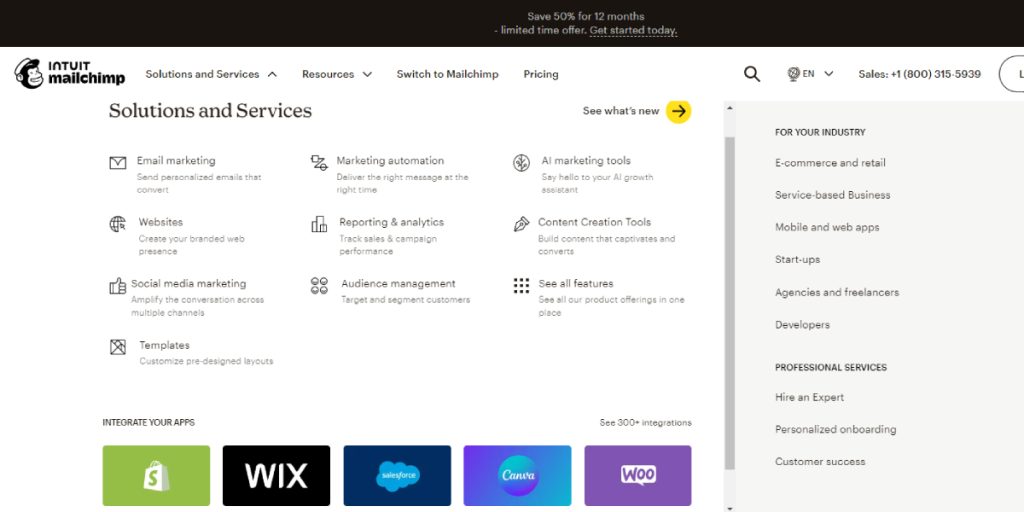
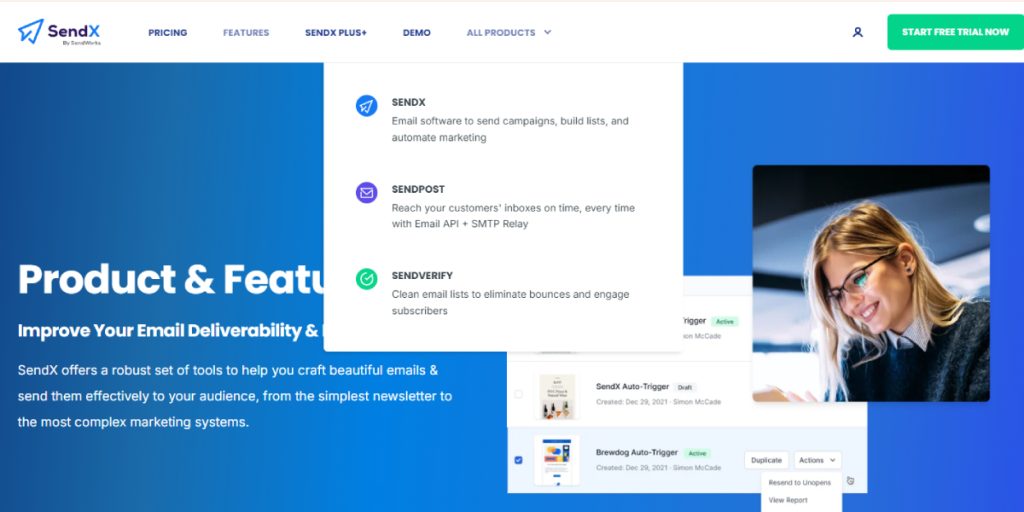
User Interface and Accessibility
Mailchimp and SendX both offer user-friendly interfaces, but with distinct approaches. Mailchimp’s interface is renowned for its intuitive design, particularly its drag-and-drop email builder, which caters to users with varying levels of technical expertise. This ease of use extends to its template library, offering a wide range of customizable options.
SendX, while also user-friendly, presents a slightly more sophisticated interface that may appeal more to users with some email marketing experience. Both platforms ensure mobile optimization, recognizing the importance of engagement across devices.
Mailchimp’s extensive customization options for emails, forms, and landing pages allow for consistent branding, while SendX focuses on essential design elements. The choice between the two may depend on the user’s preference for extensive customization versus streamlined functionality.
Automation Features and Workflow Management
Both Mailchimp and SendX offer robust automation capabilities, but with some notable differences. Mailchimp excels in this area with its Customer Journey Builder, allowing for the creation of sophisticated email sequences and automated workflows. By mapping out customer interactions and setting triggers based on their behavior, such as cart abandonment, businesses can significantly enhance engagement and conversions.
SendX, while not as advanced as Mailchimp, still provides strong automation features. It offers email sequences and triggers based on user actions, allowing for personalized and timely communication with subscribers. Additionally, SendX allows automation for SMS campaigns, enabling businesses to reach subscribers instantly and increase the likelihood of immediate engagement.
Furthermore, Mailchimp’s A/B testing capabilities provide valuable insights into what resonates with audiences, allowing for data-driven optimization of email campaigns. Regularly testing different elements like subject lines, send times, and content layouts can help identify the most effective strategies and improve overall campaign performance.
- Mailchimp’s Customer Journey Builder: Create automated workflows that respond to customer behaviors.
- SendX’s SMS Automation: Combine SMS with email for instant subscriber engagement.
- A/B Testing in Mailchimp: Optimize campaigns by testing different elements.
Pricing Models and Flexibility
Pricing is a crucial factor in choosing an email marketing platform, and both Mailchimp and SendX offer different approaches. Mailchimp operates on a subscriber-based pricing model, offering a free plan for up to 500 subscribers and paid plans starting at $9.99/month. This structure allows businesses to scale their email marketing efforts as their audience grows, with access to advanced features increasing at higher tiers.
In contrast, SendX offers a more flexible pricing structure. It includes a free tier for up to 2,500 subscribers, which is more generous than Mailchimp’s offering. Additionally, SendX provides pay-as-you-go options, which can be particularly appealing for businesses with variable email needs or those who send emails infrequently. This flexibility in pricing allows businesses to scale their email marketing efforts more cost-effectively, especially during periods of growth or fluctuating marketing needs.
- Mailchimp’s Tiered Pricing: Starts at $9.99/month for up to 500 subscribers.
- SendX’s Flat-Rate Pricing: More cost-effective with unlimited email sends.
- Pay-As-You-Go Options: Available with SendX for variable email needs.
Integration Capabilities and Connectivity
Both Mailchimp and SendX offer strong integration capabilities, allowing users to connect their email marketing efforts with other business tools and platforms. Mailchimp has a slight advantage in this area due to its wider array of native integrations. It supports connections with various e-commerce platforms, CRM systems, and social media tools, making it easier for users to sync data and streamline their marketing processes.
SendX, while having fewer native integrations, compensates for this with Zapier integration. This expands its connectivity options significantly, allowing users to connect SendX with hundreds of other applications and services. The integration capabilities of both platforms enable businesses to create more cohesive marketing ecosystems, where data flows seamlessly between different tools and platforms, enhancing overall marketing efficiency and effectiveness.
Analytics and Reporting Tools
When it comes to analytics and reporting, both Mailchimp and SendX offer comprehensive tools to help users understand and optimize their email marketing performance. Mailchimp’s analytics are particularly praised for their depth and insights. As one user on Software Advice notes, “The reporting features are extensive and provide valuable insights for optimizing our campaigns.”
Mailchimp offers detailed metrics on open rates, click-through rates, and subscriber engagement, along with advanced features like revenue attribution for e-commerce integrations. SendX also provides robust analytics, including standard email performance metrics and subscriber behavior analysis. However, some users report that the depth of insights may not match Mailchimp’s offerings.
Both platforms allow users to track campaign performance over time, segment their audience based on engagement, and use A/B testing to optimize their email content and strategies. The comprehensive analytics tools provided by both Mailchimp and SendX empower businesses to make data-driven decisions, enhancing the effectiveness of their email marketing campaigns.
Monetization Features
Monetization is a critical aspect of email marketing, and both Mailchimp and SendX offer features to support revenue generation. Mailchimp’s robust e-commerce integrations facilitate effective marketing for online stores and products, indirectly supporting revenue generation by enabling businesses to promote their offerings seamlessly within email campaigns.
SendX, on the other hand, provides a built-in referral program that encourages existing subscribers to refer new ones. This can help businesses grow their subscriber base organically without additional marketing costs. By leveraging word-of-mouth marketing, SendX’s referral program can significantly boost subscriber numbers, enhancing the overall reach and effectiveness of email campaigns.
Additionally, SendX allows for SMS marketing, enabling businesses to reach subscribers instantly and drive immediate engagement and conversions. Combining SMS with email campaigns can create a more comprehensive and effective monetization strategy, tapping into subscribers’ preferred communication channels.
- Mailchimp’s E-commerce Integrations: Seamlessly promote products within email campaigns.
- SendX’s Referral Program: Encourage subscribers to refer new ones organically.
- SendX’s SMS Marketing: Reach subscribers instantly for immediate engagement.
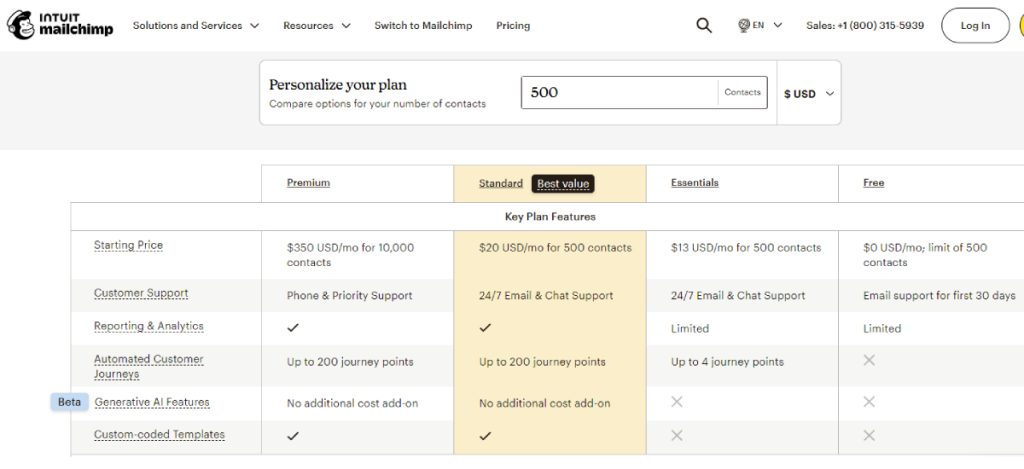
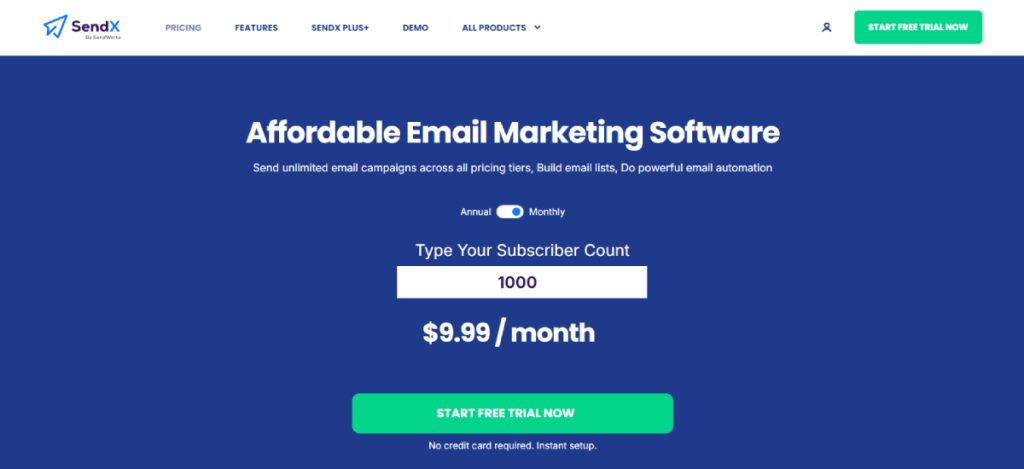
Hidden Gems
1. Utilize Mailchimp’s Customer Journey Builder
Many users overlook the potential of Mailchimp’s Customer Journey Builder. This feature allows you to create automated workflows that respond to customer behaviors, like sending a welcome email when someone subscribes or an abandoned cart reminder. By tailoring these journeys, you can significantly enhance customer engagement and retention.
2. Leverage SendX’s High Deliverability Rates
SendX claims an 80% deliverability rate by focusing on content quality and engagement. Users should prioritize crafting engaging content and maintaining a clean email list to take full advantage of this high deliverability, which can lead to better campaign performance compared to Mailchimp.
3. Take Advantage of Mailchimp’s A/B Testing
While A/B testing is common knowledge, many users do not fully utilize it across different elements (subject lines, content layouts, send times). Regularly testing these variables can provide insights that help optimize future campaigns for higher engagement rates.
4. Use SendX’s Simple Drip Campaigns
SendX offers straightforward drip campaigns that are easy to set up and manage. This feature allows users to nurture leads over time without the complexity found in other platforms, making it ideal for small businesses or beginners.
5. Incorporate Polls and Surveys in Mailchimp
Mailchimp allows you to create surveys directly within your emails. This feature can be used to gather feedback from your audience about their preferences or satisfaction levels, providing valuable insights for future campaigns.
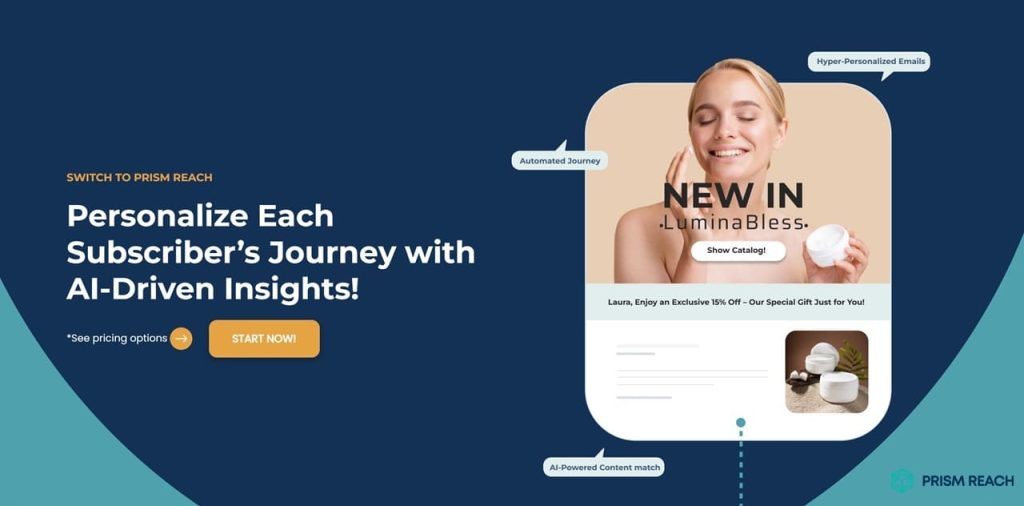
Innovative Solutions by Prism Reach
Company and Product Overview
Prism Reach is an innovative AI-powered SaaS solution designed to enhance the effectiveness of email marketing campaigns through deep personalization. This platform stands out by transforming how publishers and content creators engage with their audiences, using sophisticated AI algorithms to customize every aspect of newsletters based on subscriber behavior and preferences.
Target Audience
The primary users of Prism Reach are publishers across various platforms, including international media outlets, blogs, and forums. The company has also set its sights on expanding into the eCommerce sector, aiming to leverage its technology to enhance digital marketing efforts in this rapidly growing area.
Key Features
- AI-Powered Personalization:
- Content Clustering: Utilizes both open and proprietary AI models to categorize content effectively.
- User Avatars: Enriches user data for creating highly personalized profiles.
- Personalized Introductions: Generates custom introduction paragraphs for each subscriber using advanced data analytics.
- Optimal Sending Times: Uses predictive analytics to determine the best times to send newsletters, maximizing subscriber engagement.
- Seamless Setup and Integration:
- Quick Setup: The platform can be integrated within 10 minutes, making it user-friendly.
- One-Click Uploads: Facilitates easy migration of existing subscriber lists.
- AI-Enhanced Sign-Up Forms: Designed to increase sign-up rates through AI-generated content tailored to the user’s context and improve GDPR compliance.
- Dynamic Content Selection: The AI determines the most relevant content for each subscriber, enhancing the personalization of each newsletter.
- Advertising Network and Swap Network:
- Provides a platform for targeted advertising similar to major online ad networks, allowing for precise ad placement based on subscriber data.
- Facilitates mutual promotion among publishers, broadening content reach and enhancing subscriber engagement.
- Advanced AI Features: Includes anti-spam checks and a focus on high deliverability, crucial for maintaining engagement levels and avoiding spam filters.
Benefits of Prism Reach
- AI-Powered Personalization: Enhances engagement by tailoring content to subscriber preferences, resulting in up to 40% higher engagement rates.
- Advanced Segmentation: Allows highly targeted campaigns, improving open and click-through rates through detailed audience segmentation.
- Seamless Integration: Easily integrates with existing platforms like Mailchimp and SendX, streamlining marketing efforts and enabling a cohesive email marketing strategy.
Upgrade Your Email Marketing with AI Personalization!
Hidden Gems: Prism Reach’s Unique Features
1. Monitor Engagement Metrics in Real-Time
Both Mailchimp and SendX provide analytics tools, but many users do not regularly check them post-campaign. By monitoring metrics like open rates and click-through rates in real-time, you can make quick adjustments to ongoing campaigns based on performance data. Prism Reach offers enhanced real-time analytics, allowing for more agile and responsive campaign management.
2. Utilize SendX’s SMS Marketing Feature
Many users overlook the SMS marketing capabilities within SendX. By integrating SMS into your marketing strategy, you can reach subscribers instantly and increase engagement rates significantly. Combining SMS with email campaigns provides a multi-faceted approach to customer engagement, ensuring that your messages are seen and acted upon promptly.
3. Incorporate Polls and Surveys in Mailchimp
Mailchimp allows you to create surveys directly within your emails. This feature can be used to gather feedback from your audience about their preferences or satisfaction levels, providing valuable insights for future campaigns. Prism Reach can leverage this feedback to further refine AI-driven personalization, ensuring that your content remains relevant and engaging.
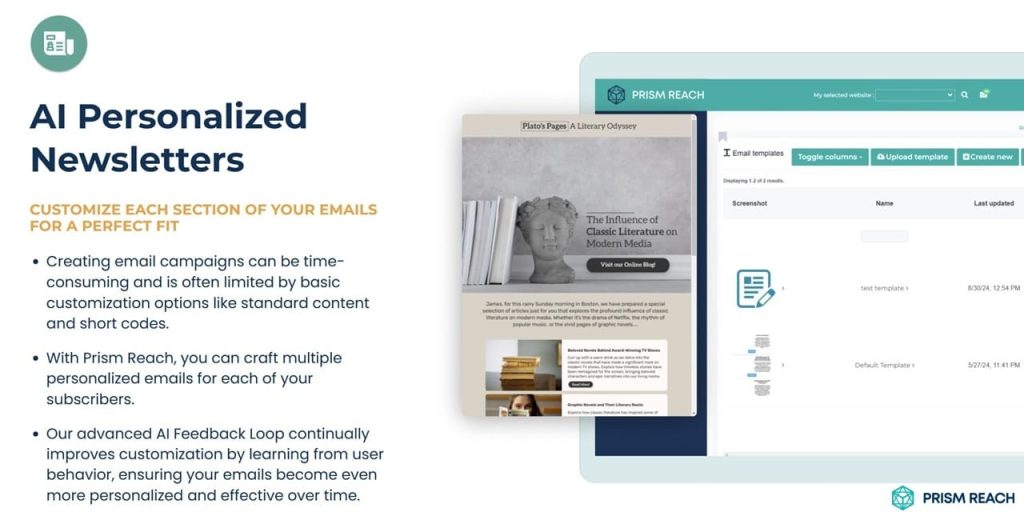
User Journey
The typical user journey with Prism Reach involves a streamlined process where subscribers sign up through a customized form, select their interests, and then receive personalized newsletters that cater specifically to their preferences. This journey not only enhances user satisfaction but also boosts the likelihood of long-term subscriber retention. Prism Reach’s AI-driven insights ensure that each interaction is meaningful and tailored, fostering a deeper connection between the brand and its audience.
Compliance and Data Privacy
Prism Reach emphasizes GDPR compliance and hosts data within Europe, adhering to the highest standards of data protection. This focus on privacy is crucial for building trust with users and complying with international regulations. Both Mailchimp and SendX also prioritize data privacy, offering robust security measures to protect subscriber information.
Future Prospects
Looking ahead, Prism Reach aims to expand its technology into the eCommerce sector and explore new ways to leverage AI for broader marketing applications. The company is committed to continuous improvement of its AI algorithms, ensuring that its solutions remain at the cutting edge of technology and marketing innovation. As email marketing continues to evolve, Prism Reach is poised to lead the way in personalized, AI-driven marketing strategies.
Conclusion
The choice between Mailchimp and SendX ultimately depends on your specific needs, goals, and level of technical expertise. Mailchimp offers a comprehensive suite of tools for those seeking advanced marketing automation and customization. It’s particularly well-suited for businesses of all sizes, content creators, and those with complex marketing needs.
SendX, with its cost-effective pricing and unlimited email sends, is ideal for small to medium-sized businesses looking for essential email marketing functionalities without escalating costs. Its multi-channel marketing capabilities and user-friendly interface make it a strong contender for businesses aiming to engage their audience across various platforms.
However, for those seeking cutting-edge personalization and AI-driven optimization, Prism Reach offers an innovative solution that could potentially outperform traditional email marketing platforms in terms of engagement and monetization. By leveraging AI to understand and predict subscriber preferences, Prism Reach delivers content that is not only relevant but also timely, enhancing the overall impact of digital marketing campaigns and fostering stronger connections between businesses and their audiences.